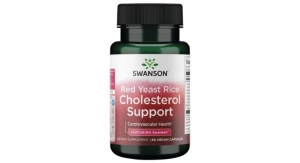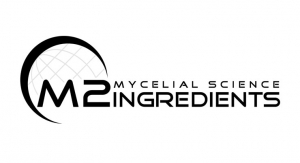By David Law, President & CEO, Gourmet Mushrooms, Inc10.01.20
When Gourmet Mushrooms, Inc. (GMI) started cultivating Shiitake mushrooms in 1977, the company—through its mentor, Dr. Yoshii of Oita, Japan—learned to produce Reishi (Ganoderma lucidum) and Shiitake (Lentinula edodes) mycelial biomass. At that time, pronouncing the word “Shiitake” was a common challenge. The Rei-Shi-Gen (Reishi/Shiitake Genmei) product, mushroom mycelium grown on sterilized organic brown rice, was a novel nutraceutical item.
Over the years, GMI continued to develop more than 30 fungal species of nutraceutical products. The fresh mushroom offering has expanded to 10 varieties including Pom Pom (GMI tradename, Lion’s Mane), Maitake, Trumpet, Himematsutake (A. blazei), Buna Shimeji, Pioppini, Nameko, etc.
Amazon did not exist at that time. Today, when one searches “mushroom health foods” at Amazon.com, seven pages of over 100 mushroom products return with the inquiry. There are products with a combination of up to 10 different fungal species. The more popular ones include Reishi, Shiitake, Turkey Tail, Cordyceps, Maitake, Agaricus blazei, and Chaga. Some products are based on the mycelium of the fungi and others are based on extracts from the mushroom fruiting bodies. The issue of mycelium vs. fruiting bodies and hot water extraction has become a hot topic with contentious debates in many venues.
A white paper (“Redefining Medicinal Mushrooms,” by Jeff Chilton, Nammex) noted that the regulatory community needs to pay attention to the health claims made about fungal nutritional supplements along with the identity and purity of products. The focus of the paper was on the identification of the “plant part” and the analysis of four marker materials: beta-D-glucan, triterpenoids, Ergosterol, and starch. The first three were allegedly the active compounds and the last one, the product adulterant.
Understanding Fungi
Fungi have been a source of allopathic medicine (e.g., Penicillin from Penicillium rubens as antibiotics for bacterial infections; cyclosporine from Tolypocladium inflatum promoted organ transplantation; Lovastatin from Aspergillus terreus as a cholesterol lowering drug; and Taxol from Taxomyces andreanae under the bark of the Pacific yew tree as a cancer drug). Genetically engineered yeast cells have become a factory for protein-based vaccines and human therapeutic proteins.
The hyphae of filamentous fungi extend the tips of their cells in linear arrays forming a 3-D network of mycelium. This mycelial network maximizes the surface area for nutrient absorption and allows the fungus to effectively colonize its substrates. The mycelial stage is long-lived while it expands its territory. Some of these hyphae may differentiate into more compact dikaryotic tissues in forming short-lived, spore-producing fruiting bodies for reproduction.
Both the vegetative mycelium and the fruiting bodies attract bacteria and animal predators seeking dietary nutrients. The main defense strategy of fungi is chemical protection against its antagonist. These defense substances include secondary metabolites, peptides, and proteins which will bind to the specific target molecules of its antagonists. Some of these chemicals are excreted and some are stored within the fungal cells. The chemicals will act to interfere with the physiological functions of the antagonists. Some chemicals also act to interrupt bacterial and animal communications. Since the mycelium and the fruiting bodies attract different antagonists, different secondary metabolites are expressed at different stages in the fungal life cycle.
The vegetative stage of fungal mycelium is long-lived and covers expanding territory, it will require constant excretion of secondary metabolites to safeguard its existence. It is these metabolites that are of interest for promoting health. By focusing on only the fruiting bodies of fungi, one may miss out on some important beneficial metabolites.
Application & Research
GMI has been cultivating large quantities of Maitake mushrooms and the functional food quality has been studied (Journal of functional Foods, 2018). Extracts of the Maitake fruiting bodies afforded glycerides, sterols, a glucosylceramide, an α-glucose dimer, phospholipids, and α-glucan. Most of the pure isolates showed anti-inflammatory and antioxidant activities as demonstrated by inhibitions of cyclooxygenase enzymes (COX-1 and -2) and lipid peroxidation (LPO), respectively. Some of the compounds from this mushroom inhibited COX enzyme at 100 µg/mL, similar to aspirin, naproxen and ibuprofen, the non-steroidal anti-inflammatory drugs (NSAIDS) used as controls in the assays.
One of GMI’s mycelial biomass products (Shiitake) was used in a study (Annals of Translational Medicine, 2014), which found the Shiitake mycelial biomass, when added to a high value Maitake extract, was shown to exhibit the most active stimulation of defense reaction.
The measurements of phagocytosis, NK cell activity and secretion of I-6, IL-12, IFN-γ as well as C-reactive protein (CRP) were made in this study. AHCC (Active Hexose Correlated Compound) was used for comparison. The Maitake extract alone was the second strongest, followed by Shiitake on its own and AHCC. (See the charts to the right for more analysis).
Future Outlook
The most important function of mushroom supplementation has been to support immune health in humans. The current COVID-19 pandemic has shown the vulnerability of the population to the novel coronavirus (SARS-CoV-2). Age, ethnicity, and comorbidity are strong indicators for poor outcomes.
Two strong antioxidants found in mushrooms have been shown to have cytoprotective properties. These are dietary amino acids ergothioneine and glutathione, which is a tripeptide (γ-glutamyl cysteinyl glycine). These antioxidants are able to modulate inflammation, scavenge free radicals, protect against respiratory distress syndrome, prevent endothelial dysfunction, protect against ischemia and reperfusion injury, protect against neuronal damage, counteract iron dysregulation, hinder lung and liver fibrosis, and mitigate damage to the lungs, kidneys, liver, gastrointestinal tract, and testes, among many others (Antioxidants, 2020).
In terms of future trends for mushroom-based supplements, the focus should be on testing. The effects of mushroom supplementation on hemopoiesis and immune responses, such as CD69 activation marker for NK cells/monocytes and macrophages development, should be studied. There is significant potential for some mushroom supplements in terms of their anti-viral properties.
A Chinese proverb states that healing starts with addressing mild symptoms. Fungal supplements fit well in a true healthcare model; whereas modern allopathic medicine falls in the category of emergency medicine, or a disease care model.
About the author: David Law is the president and CEO of Gourmet Mushrooms, Inc. Sebastopol, CA. He invites like-minded people to join his Myco-cultural Revolution. He can be reached at david@mycopia.com.
Over the years, GMI continued to develop more than 30 fungal species of nutraceutical products. The fresh mushroom offering has expanded to 10 varieties including Pom Pom (GMI tradename, Lion’s Mane), Maitake, Trumpet, Himematsutake (A. blazei), Buna Shimeji, Pioppini, Nameko, etc.
Amazon did not exist at that time. Today, when one searches “mushroom health foods” at Amazon.com, seven pages of over 100 mushroom products return with the inquiry. There are products with a combination of up to 10 different fungal species. The more popular ones include Reishi, Shiitake, Turkey Tail, Cordyceps, Maitake, Agaricus blazei, and Chaga. Some products are based on the mycelium of the fungi and others are based on extracts from the mushroom fruiting bodies. The issue of mycelium vs. fruiting bodies and hot water extraction has become a hot topic with contentious debates in many venues.
A white paper (“Redefining Medicinal Mushrooms,” by Jeff Chilton, Nammex) noted that the regulatory community needs to pay attention to the health claims made about fungal nutritional supplements along with the identity and purity of products. The focus of the paper was on the identification of the “plant part” and the analysis of four marker materials: beta-D-glucan, triterpenoids, Ergosterol, and starch. The first three were allegedly the active compounds and the last one, the product adulterant.
Understanding Fungi
Fungi have been a source of allopathic medicine (e.g., Penicillin from Penicillium rubens as antibiotics for bacterial infections; cyclosporine from Tolypocladium inflatum promoted organ transplantation; Lovastatin from Aspergillus terreus as a cholesterol lowering drug; and Taxol from Taxomyces andreanae under the bark of the Pacific yew tree as a cancer drug). Genetically engineered yeast cells have become a factory for protein-based vaccines and human therapeutic proteins.
The hyphae of filamentous fungi extend the tips of their cells in linear arrays forming a 3-D network of mycelium. This mycelial network maximizes the surface area for nutrient absorption and allows the fungus to effectively colonize its substrates. The mycelial stage is long-lived while it expands its territory. Some of these hyphae may differentiate into more compact dikaryotic tissues in forming short-lived, spore-producing fruiting bodies for reproduction.
Both the vegetative mycelium and the fruiting bodies attract bacteria and animal predators seeking dietary nutrients. The main defense strategy of fungi is chemical protection against its antagonist. These defense substances include secondary metabolites, peptides, and proteins which will bind to the specific target molecules of its antagonists. Some of these chemicals are excreted and some are stored within the fungal cells. The chemicals will act to interfere with the physiological functions of the antagonists. Some chemicals also act to interrupt bacterial and animal communications. Since the mycelium and the fruiting bodies attract different antagonists, different secondary metabolites are expressed at different stages in the fungal life cycle.
The vegetative stage of fungal mycelium is long-lived and covers expanding territory, it will require constant excretion of secondary metabolites to safeguard its existence. It is these metabolites that are of interest for promoting health. By focusing on only the fruiting bodies of fungi, one may miss out on some important beneficial metabolites.
Application & Research
GMI has been cultivating large quantities of Maitake mushrooms and the functional food quality has been studied (Journal of functional Foods, 2018). Extracts of the Maitake fruiting bodies afforded glycerides, sterols, a glucosylceramide, an α-glucose dimer, phospholipids, and α-glucan. Most of the pure isolates showed anti-inflammatory and antioxidant activities as demonstrated by inhibitions of cyclooxygenase enzymes (COX-1 and -2) and lipid peroxidation (LPO), respectively. Some of the compounds from this mushroom inhibited COX enzyme at 100 µg/mL, similar to aspirin, naproxen and ibuprofen, the non-steroidal anti-inflammatory drugs (NSAIDS) used as controls in the assays.
One of GMI’s mycelial biomass products (Shiitake) was used in a study (Annals of Translational Medicine, 2014), which found the Shiitake mycelial biomass, when added to a high value Maitake extract, was shown to exhibit the most active stimulation of defense reaction.
The measurements of phagocytosis, NK cell activity and secretion of I-6, IL-12, IFN-γ as well as C-reactive protein (CRP) were made in this study. AHCC (Active Hexose Correlated Compound) was used for comparison. The Maitake extract alone was the second strongest, followed by Shiitake on its own and AHCC. (See the charts to the right for more analysis).
Future Outlook
The most important function of mushroom supplementation has been to support immune health in humans. The current COVID-19 pandemic has shown the vulnerability of the population to the novel coronavirus (SARS-CoV-2). Age, ethnicity, and comorbidity are strong indicators for poor outcomes.
Two strong antioxidants found in mushrooms have been shown to have cytoprotective properties. These are dietary amino acids ergothioneine and glutathione, which is a tripeptide (γ-glutamyl cysteinyl glycine). These antioxidants are able to modulate inflammation, scavenge free radicals, protect against respiratory distress syndrome, prevent endothelial dysfunction, protect against ischemia and reperfusion injury, protect against neuronal damage, counteract iron dysregulation, hinder lung and liver fibrosis, and mitigate damage to the lungs, kidneys, liver, gastrointestinal tract, and testes, among many others (Antioxidants, 2020).
In terms of future trends for mushroom-based supplements, the focus should be on testing. The effects of mushroom supplementation on hemopoiesis and immune responses, such as CD69 activation marker for NK cells/monocytes and macrophages development, should be studied. There is significant potential for some mushroom supplements in terms of their anti-viral properties.
A Chinese proverb states that healing starts with addressing mild symptoms. Fungal supplements fit well in a true healthcare model; whereas modern allopathic medicine falls in the category of emergency medicine, or a disease care model.
About the author: David Law is the president and CEO of Gourmet Mushrooms, Inc. Sebastopol, CA. He invites like-minded people to join his Myco-cultural Revolution. He can be reached at david@mycopia.com.



































